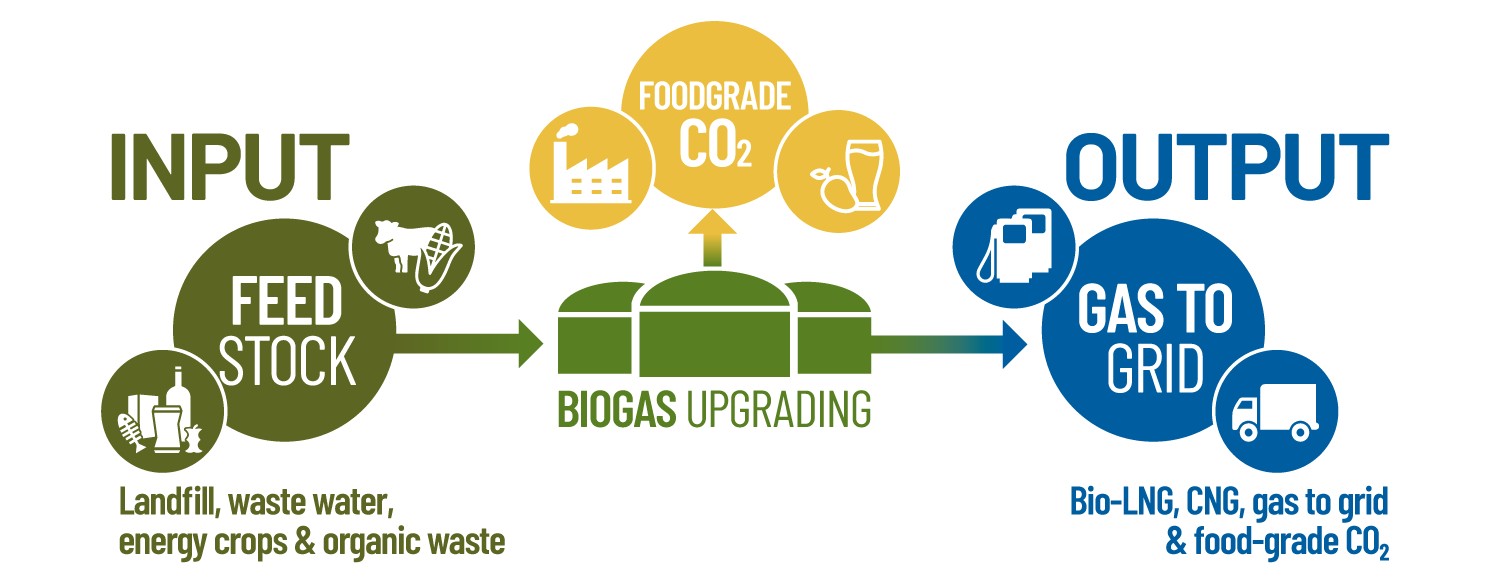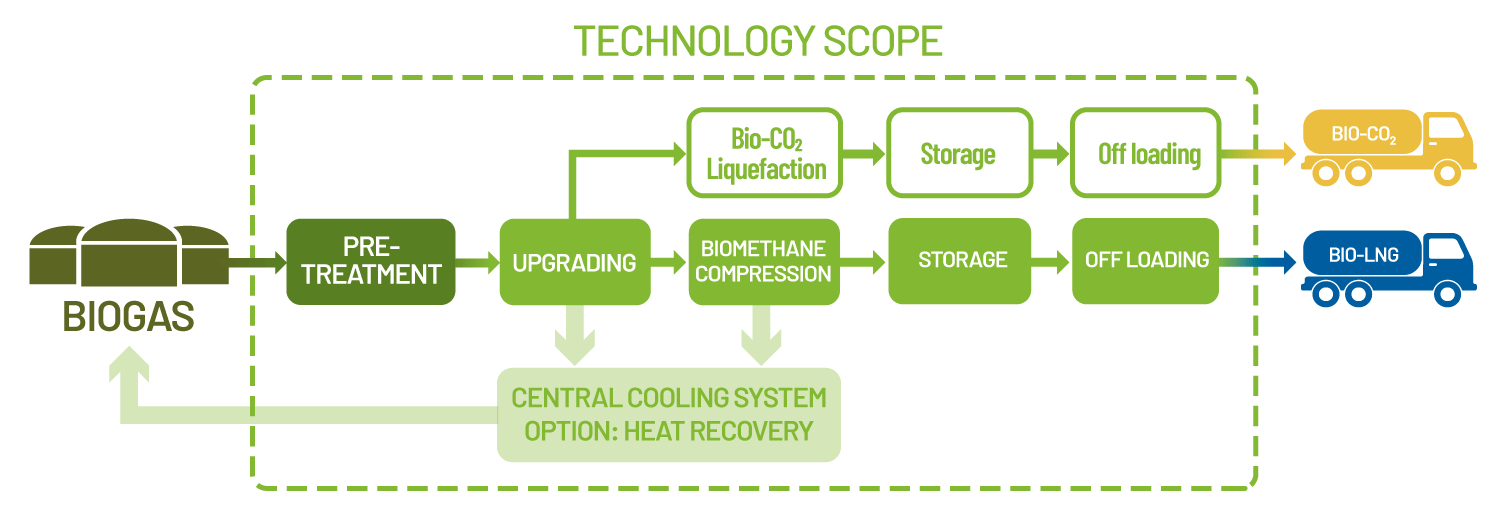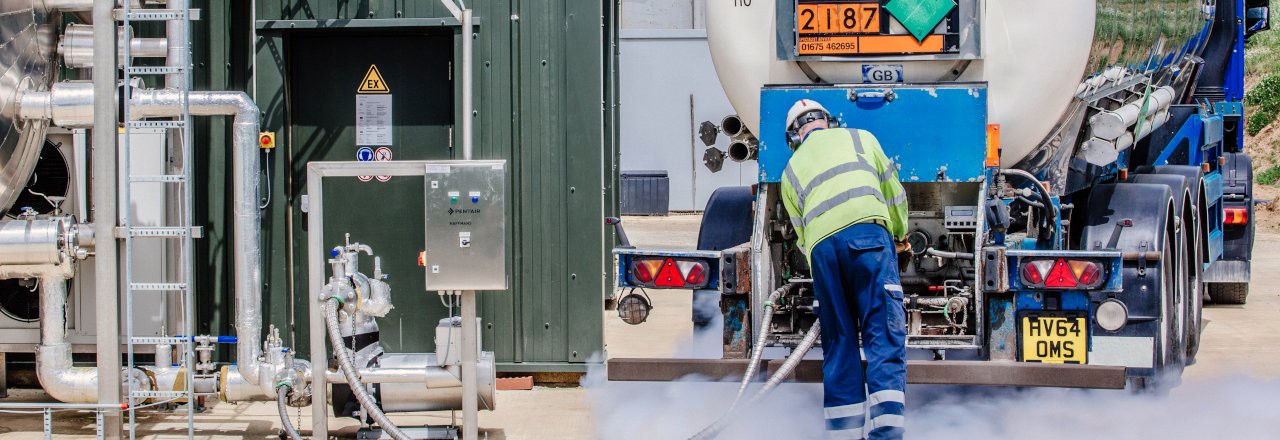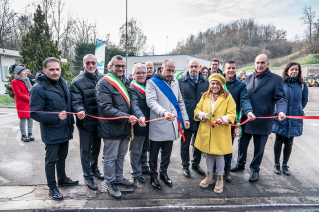- Home
- Output
BIOGAS UPGRADING OUTCOMES
Upgraded biogas, or biomethane, is a versatile energy source. Biomethane can help curb greenhouse gas emissions as the reliance on burning fossil fuels for energy declines.
Biomethane’s resulting renewable by-product, bio-CO2, can be stored or used to produce products. Creating bio-CO2
from a sustainable, organic source will help reduce harmful carbon emissions and reliance on fossil fuel-based CO2.

-
BIOMETHANE AS A RENEWABLE ENERGY
-
Upon upgrading, the resulting biomethane has similar specifications as natural gas.
This makes it fully compatible with the existing natural gas infrastructure and a sustainable replacement for fossil fuels.

-
BIOMETHANE AS A RENEWABLE FUEL
-
Biomethane can also be used as fuel–either Renewable Compressed Natural Gas (Renewable or Bio-CNG) or Renewable Liquid Natural Gas (Renewable or Bio-LNG).
This helps to eliminate fossil fuel-based carbon emissions in industrial and domestic environments, transportation, electricity and heat production.


-
BIO-CO2
-
In combination with Pentair CO2 Technology, you can obtain an additional carbon intensity lowering revenue stream known as bio-CO2. Bio-CO2 can be subsequently recovered from the biogas upgrading process.
It can then be used across various applications, such as dry ice production, beverage carbonation, or transporting perishable goods.
NEWS

